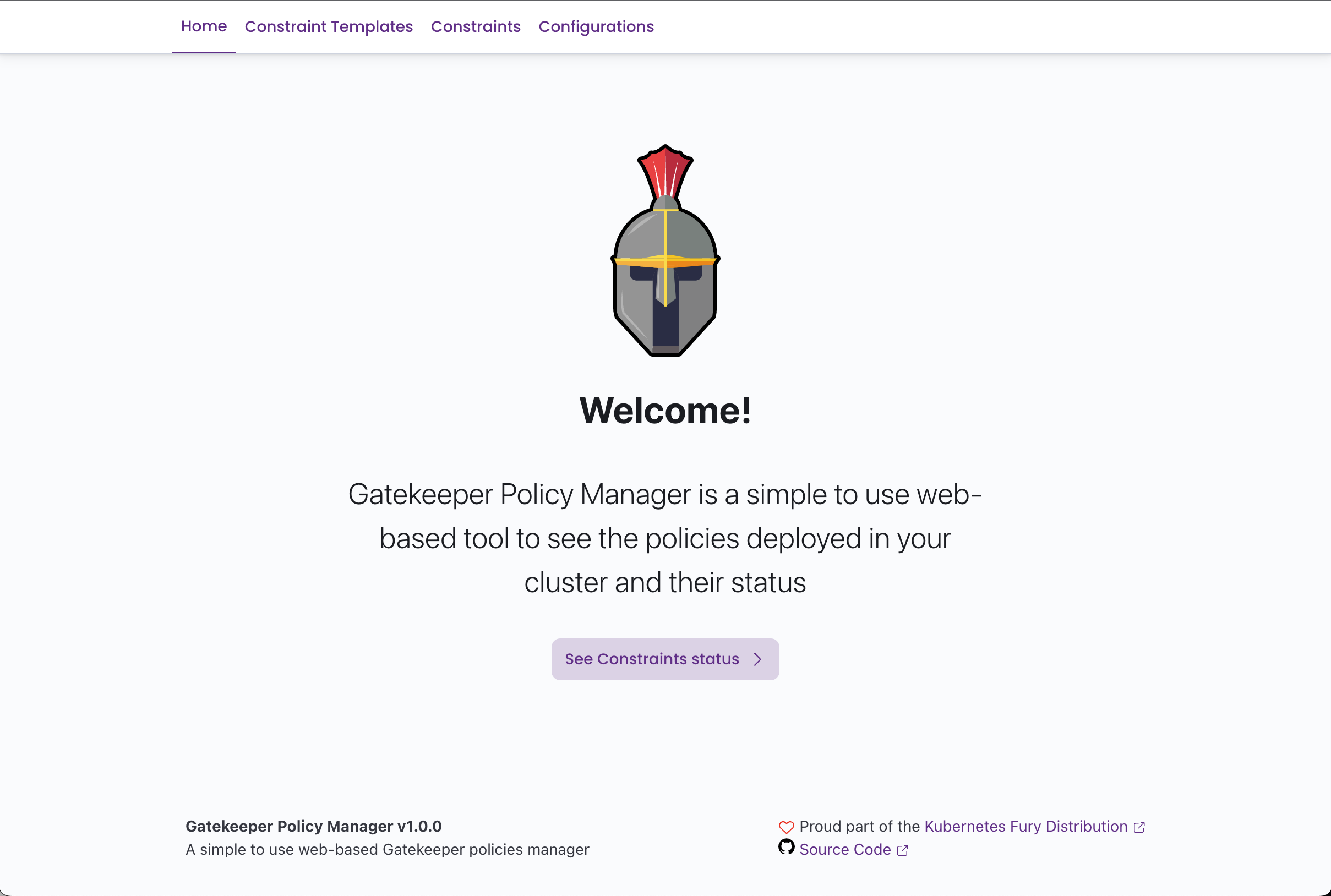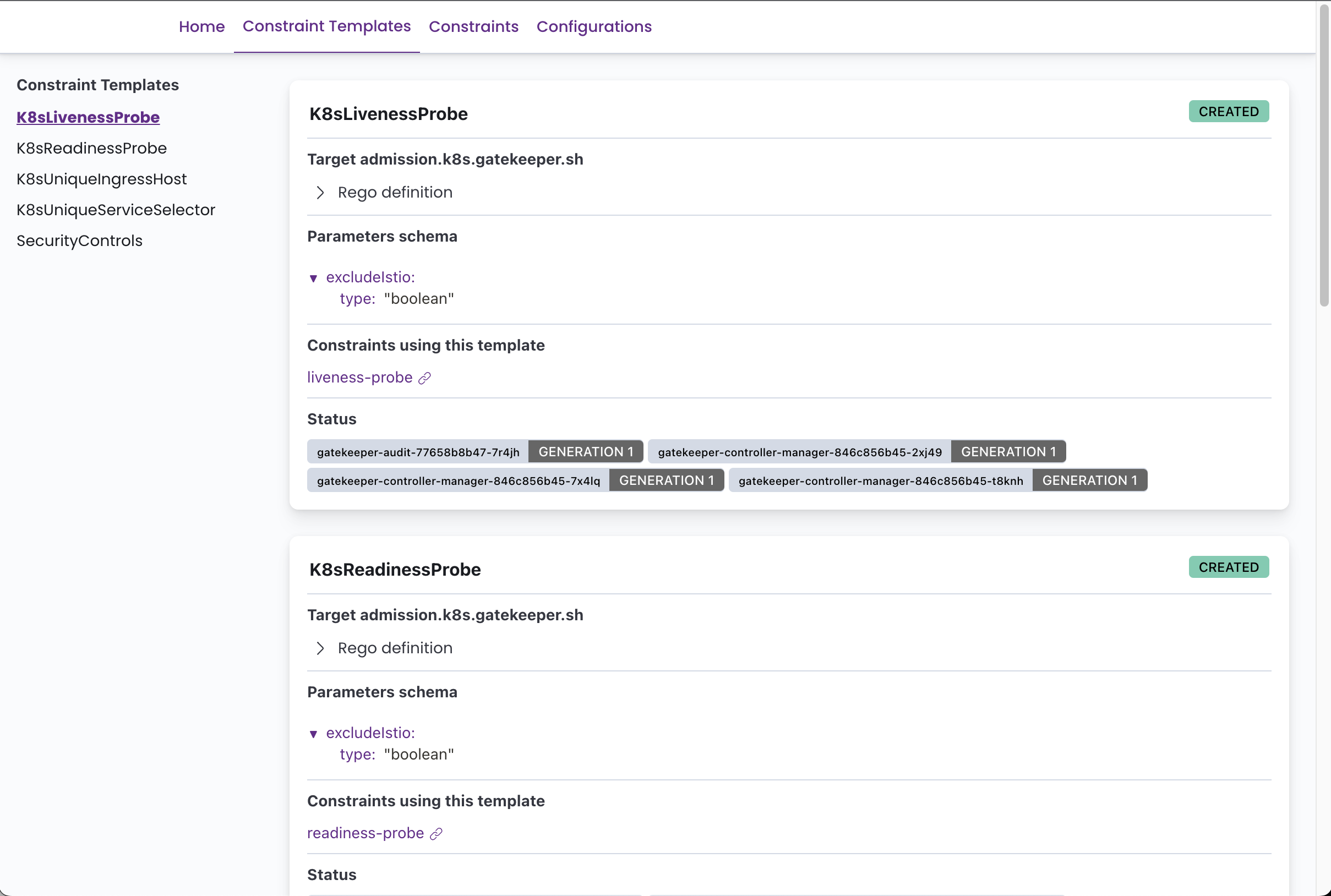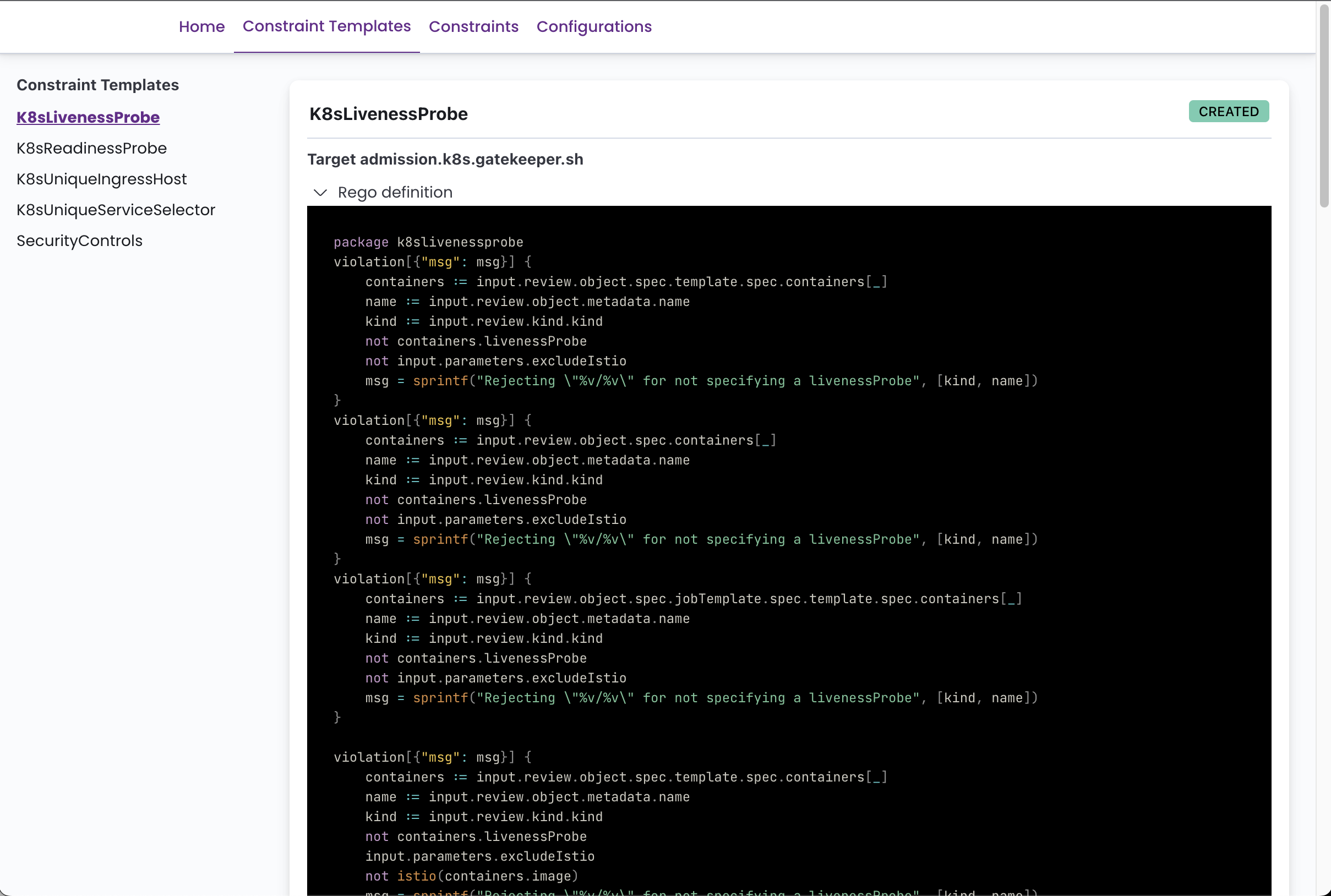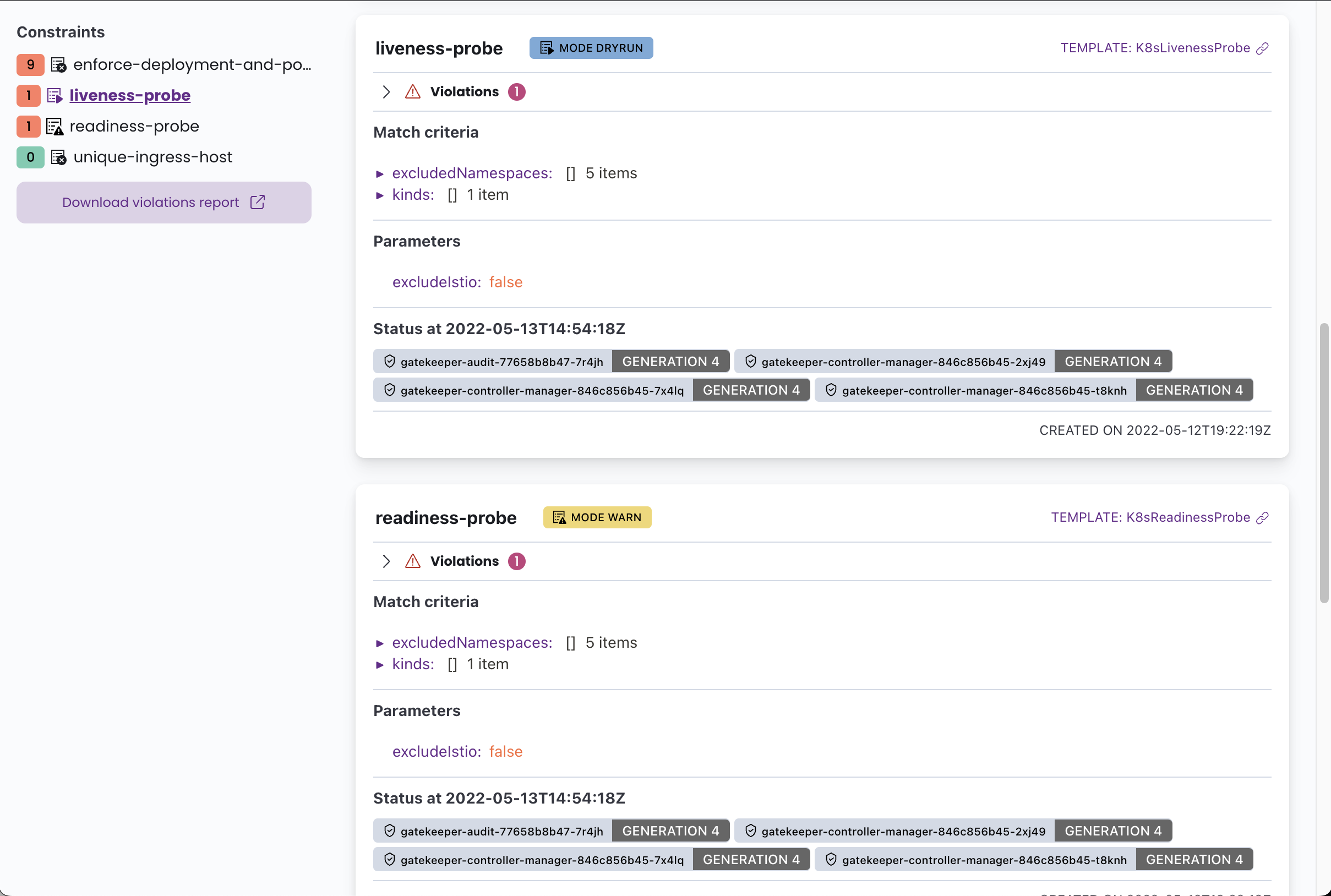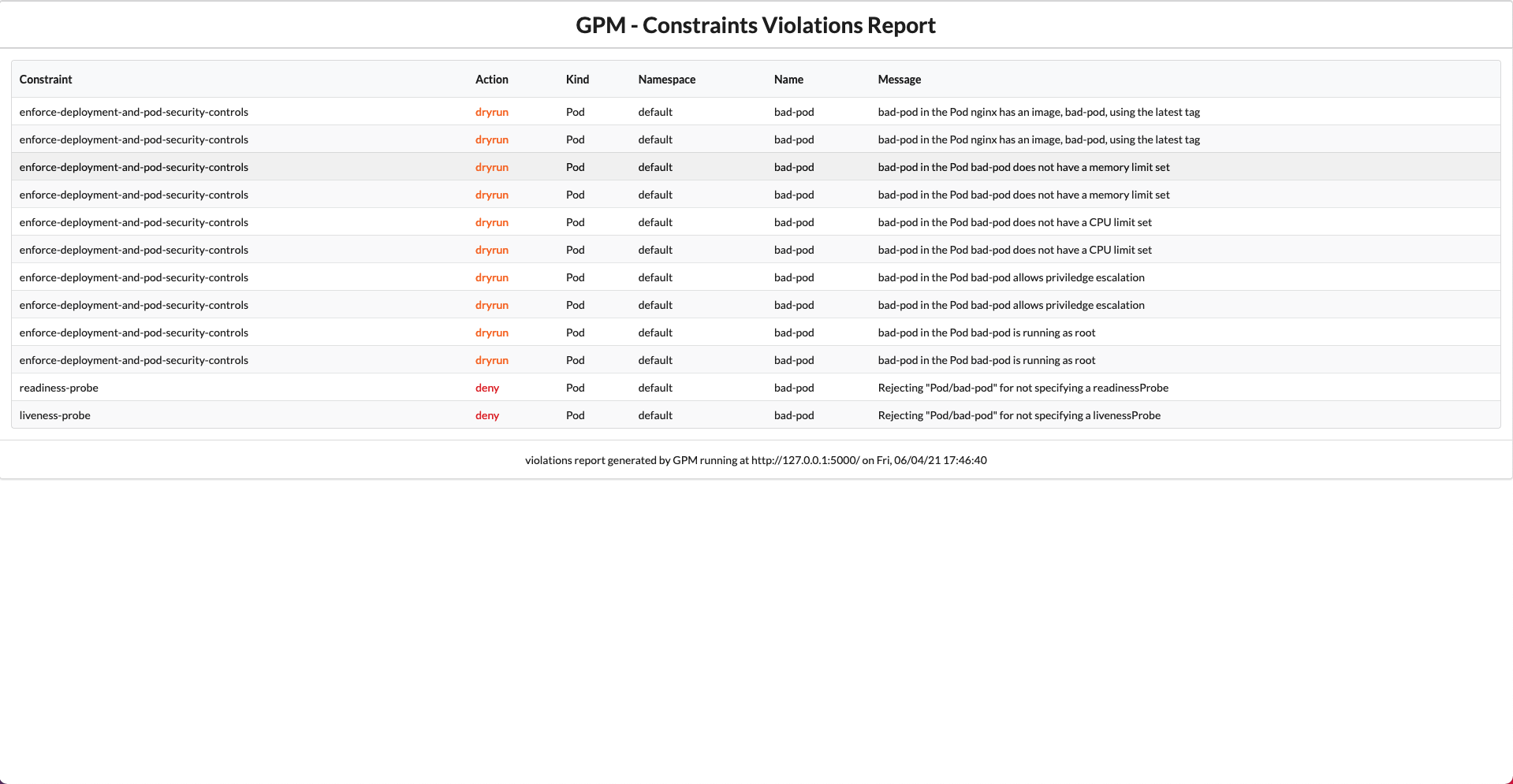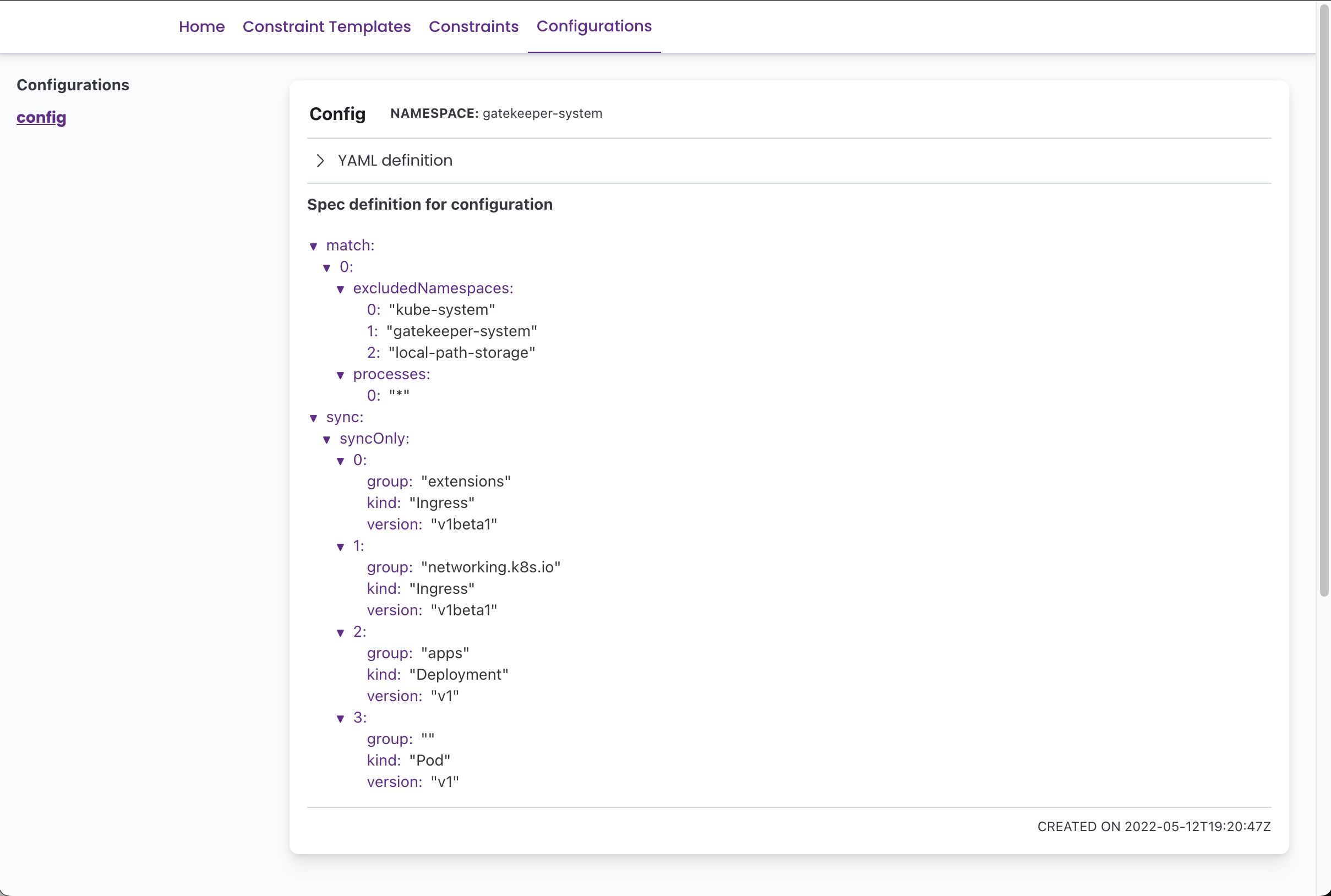sighupio / Gatekeeper Policy Manager
Labels
Projects that are alternatives of or similar to Gatekeeper Policy Manager
Gatekeeper Policy Manager (GPM)
Gatekeeper Policy Manager is a simple read-only web UI for viewing OPA Gatekeeper policies' status in a Kubernetes Cluster.
It can display all the defined Constraint Templates with their rego code, and all the Constraints with its current status, violations, enforcement action, matches definitions, etc.
Requirements
You'll need OPA Gatekeeper running in your cluster and at least some constraint templates and constraints defined to take advantage of this tool.
ℹ You can easily deploy Gatekeeper to your cluster using the (also open source) Fury Kubernetes OPA module.
Deploying GPM
To deploy Gatekeeper Policy Manager to your cluster, apply the provided kustomization file running the following command:
kubectl apply -k .
By default, this will create a deployment and a service both with the name gatekeper-policy-manager in the gatekeeper-system namespace. We invite you to take a look into the kustomization.yaml file to do further configuration.
The app can be run as a POD in a Kubernetes cluster or locally with a
kubeconfigfile. It will try its best to autodetect the correct configuration.
Once you've deployed the application, if you haven't set up an ingress, you can access the web-UI using port-forward:
kubectl -n gatekeeper-system port-forward svc/gatekeeper-policy-manager 8080:80
Then access it with your browser on: http://127.0.0.1:8080
Running locally
GPM can also be run locally using docker and a kubeconfig, assuming that the kubeconfig file you want to use is located at ~/.kube/config the command to run GPM locally would be:
docker run -v ~/.kube/config:/root/.kube/config -p 8080:8080 quay.io/sighup/gatekeeper-policy-manager:v0.4.1
Then access it with your browser on: http://127.0.0.1:8080
You can also run the flask app directly, see the development section for further information.
Configuration
GPM is a stateless application, but it can be configured using environment variables. The possible configurations are:
| Env Var Name | Description | Default |
|---|---|---|
GPM_AUTH_ENABLED |
Enable Authentication current options: "Anonymous", "OIDC" | Anonymous |
GPM_SECRET_KEY |
The secret key used to generate tokens. Change this value in production. | g8k1p3rp0l1c7m4n4g3r |
GPM_PREFERRED_URL_SCHEME |
URL scheme to be used while generating links. | http |
GPM_OIDC_REDIRECT_DOMAIN |
The server name under the app is being exposed. This is where the client will be redirected after authenticating | |
GPM_OIDC_ISSUER |
OIDC Issuer hostname | |
GPM_OIDC_AUTHORIZATION_ENDPOINT |
OIDC Authorizatoin Endpoint | |
GPM_OIDC_JWKS_URI |
OIDC JWKS URI | |
GPM_OIDC_TOKEN_ENDPOINT |
OIDC TOKEN Endpoint | |
GPM_OIDC_INTROSPECTION_ENDPOINT |
OIDC Introspection Enpoint | |
GPM_OIDC_USERINFO_ENDPOINT |
OIDC Userinfo Endpoint | |
GPM_OIDC_END_SESSION_ENDPOINT |
OIDC End Session Endpoint | |
GPM_OIDC_CLIENT_ID |
The Client ID used to authenticate against the OIDC Provider | |
GPM_OIDC_CLIENT_SECRET |
The Client Secret used to authenticate against the OIDC Provider | |
GPM_LOG_LEVEL |
Log level (see python logging docs for available levels) | INFO |
⚠️ Please notice that OIDC Authentication is in beta state. It has been tested to work with Keycloak as a provider.
These environment variables are already provided and ready to be set in the
manifests/enable-oidc.yamlfile.
Screenshots
Development
GPM is written in Python using the Flask framework for the backend and Fromantic-UI for the frontend. To develop GPM, you'll need to create a Python 3 virtual environment, install all the dependencies specified in the provided requirements.txt and you are good to start hacking.
The following commands should get you up and running:
# Create a virtualenv
$ python3 -m venv env
# Activate it
$ source ./env/bin/activate
# Install all the dependencies
$ pip install -r app/requirements.txt
# Run the development server
$ FLASK_APP=app/app.py flask run
Access to a Kubernetes cluster with Gatekeeper deployed is recommended to debug the application.
You'll need an OIDC provider to test the OIDC authentication. You can use our fury-kubernetes-keycloak module.
Roadmap
The following is a wishlist of features that we would like to add to GPM (in no particular order):
- List the constraints that are currently using a
ConstraintTemplate - Polished OIDC authentication
- LDAP authentication
- Better syntax highlighting for the rego code snippets
- Root-less docker image
- Multi-cluster view
- Minimal write capabilities?
- Re-write app in Golang?
Please, let us know if you are using GPM and what features would you like to have by creating an issue here in GitHub

